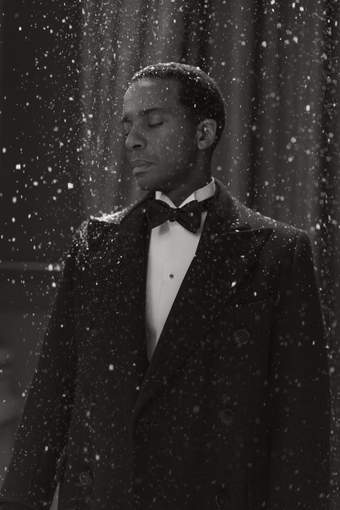
Isaac Julien: What Freedom Is To Me

Tate Britain presents the UK’s first ever survey exhibition celebrating the influential work of British artist and filmmaker Sir Isaac Julien (b. London, 1960). One of the leading artists working today, Isaac Julien is internationally acclaimed for his compelling lyrical films and video art installations. This ambitious solo show charts the development of his pioneering work in film and video over four decades from the 1980s through to the present day, revealing a career that remains as fiercely experimental and politically charged as it was forty years ago.
The exhibition presents a selection of key works from Julien’s ground-breaking early films and immersive three-screen videos made for the gallery setting, to the kaleidoscopic, sculptural multi-screen installations for which he is renowned today. Together, they explore how Julien breaks down barriers between different artistic disciplines by drawing from film, dance, photography, music, theatre, painting and sculpture.
The show opens with Julien’s earliest experiments in moving image, produced in the context of the Sankofa Film and Video Collective. Founded by Julien in the summer of 1983 together with Martina Attille, Maureen Blackwood, Robert Crusz and Nadine Marsh-Edwards, this group of London art students from across the African, Asian and Caribbean diaspora played a vital role in the establishment of Black independent cinema in Britain. Four works from this period have been brought together at Tate Britain, including Julien’s first film, Who Killed Colin Roach? (1983) – conceived as a response to the unrest following the death of a young man at the entrance to a police station, Territories (1984), which focuses on the Black British experience in the early 80s, and This is Not An AIDS Advertisement (1987), an important work of LGBTQIA+ history that continues to resonate powerfully today. The artist’s pivotal film exploring Black, queer desire – Looking for Langston (1989) – also features, bringing together poetry and image to look at the private world of the Black artists and writers who were part of the Harlem Renaissance in the 1920s.
Julien’s use of dance to articulate the movement of peoples across different continents, times and spaces, is reflected in the pioneering three-screen film installation Western Union: Small Boats (2007) and the spectacular Lina Bo Bardi - A Marvellous Entanglement (2019). In Western Union, a series of vignettes choreographed by the internationally renowned Russell Maliphant create a poetic reflection on African migration histories and the effects of trauma on people, buildings and monuments. A Marvellous Entanglement meanwhile features a stunning performance from Balé Folclórico da Bahia filmed at the Museum of Modern Art of Bahia in Brazil, meditating on the legacy of visionary modernist architect and designer Lina Bo Bardi (1914–1992).
For the first time in Europe, the exhibition premieres the artist’s latest film, Once Again...(Statues Never Die) (2022), which explores the relationship between US collector Albert C. Barnes and the famed philosopher and cultural critic Alain Locke, known as the ‘Father of the Harlem Renaissance’. The film examines their storied relationship, its mutually formative critical dialogue, and its significant impact on their work as educators and activists on behalf of various African American causes. The exhibition also showcases Julien’s critically acclaimed ten-screen film installation Lessons of the Hour (2019). A portrait of the life and times of the self-liberated freedom-fighter Frederick Douglass, this work can be seen to represent Julien’s 40-year long commitment to cultural activism, the politics and poetics of image, and the moral and social influence of picture-making.
